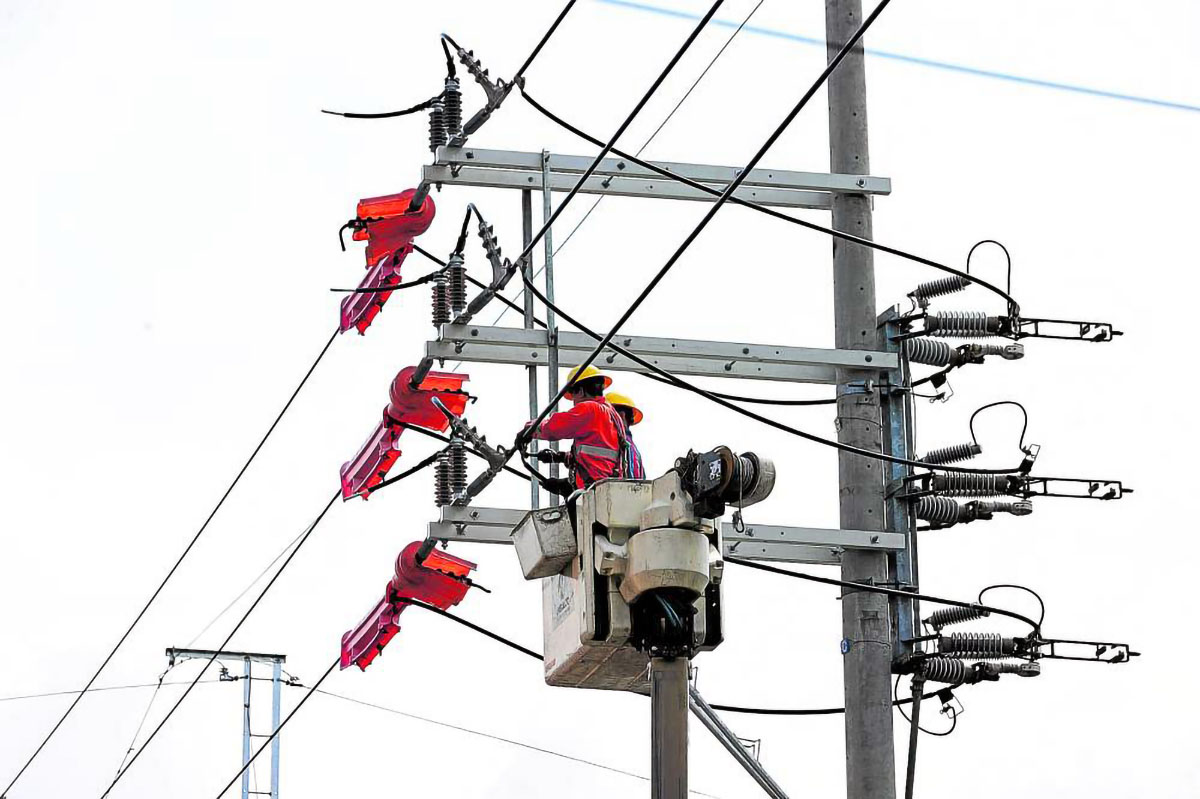
CONSUMER ADVISORY In this file photo, line personnel of Manila Electric Co. set up power cables along a street in Cubao, Quezon City. The power distributor announced a rate increase on Thursday, citing higher Wholesale Electricity Spot Market charges. —GRIG C. MONTEGRANDE
Power distributor Manila Electric Co. (Meralco) announced on Thursday an increase of P0.6436 per kilowatt-hour in its rates this month, citing higher charges from the Wholesale Electricity Spot Market (WESM).
It said in a statement that the price hike would bring the overall rate to P12.0575 per kWh in June from P11.4139 per kWh in May, equivalent to an increase of around P129 in the electricity bill of a typical household with a monthly power consumption of 200 kWh.
As in previous billings, the generation charge caused the overall rate adjustment, which rose by P0.3466 per kWh. But Meralco said the generation charge would have been higher at 48 centavos if it had levied the entire WESM charges.
Listed firm and suppliers Quezon Power (Philippines) Ltd., San Buenaventura Power Ltd. Co. and South Premiere Power Corp. deferred the collection of around P500 million in generation costs, pulling it down by P0.1313 per kWh.
READ: Electricity rates rise for 4 months in a row
Instead, the amount will be billed on a staggered basis over the next three months, as approved by the Energy Regulatory Commission (ERC).
Installment basis
But ACT Teachers Rep. France Castro suggested that if generation companies agreed to stagger power rate hikes, power distributors should also be allowed to make staggered payments because some electric cooperatives were also cash-strapped.
“We hope that they would heed our call and, as in the Meralco case, we hope that the ERC would immediately act and issue an order to this effect so that consumers can have some relief,” she added.
In a statement, Castro said that while generation companies “will still be held accountable for the power rate hikes due to their outages,” distribution utilities should at least consider splitting the hike and make sure that there were no electricity disconnections.
Castro assured the public, however, that she would be pushing for legislation that would shift the burden of higher power rates onto generation companies during plant failures.
The House of Representatives committee on energy has been investigating the frequent power issues in the Luzon and Visayas grids since May.
The probe was prompted by the rotational outages on May 8 when the Luzon grid was placed under red and yellow alerts by the National Grid Corporation of the Philippines due to the tripping of the Bolo-Masinloc 230 kilovolt Line 2.
Over the period, WESM prices climbed by P1.5203 per kWh as many power plants were unavailable or reduced their output, resulting in a thin electricity supply.
WESM is the central marketplace for trading electricity as a commodity. This is where generators can sell excess power while distribution utilities can purchase additional power, if necessary.